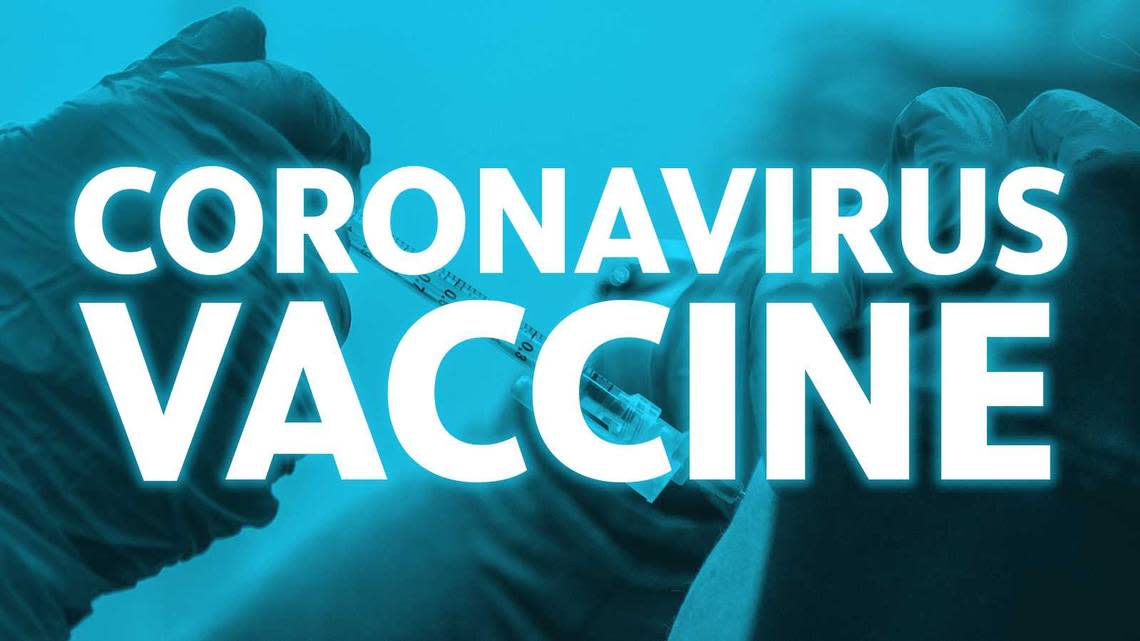New COVID variants emerge in Sacramento. At-risk residents need vaccine, officials say

- Oops!Something went wrong.Please try again later.
The U.S. Centers for Disease Control and Prevention recommends those ages 65 and up should receive an additional dose of this year’s COVID-19 vaccine, amid new variants emerging and resisting older vaccine formulas.
In February, the CDC released updated guidelines that urge people above 65 to receive another COVID-19 vaccine four months after their most recent immunization — and two months after for severely immunocompromised people above 65 — to enhance immunity against variants that are not targeted by this year’s COVID-19 vaccine formulation.
A new vaccine formula will be released later this year in response to the emerging variants, and the CDC already recommends that anyone over 6 months of age receives it when it is available.
Clint Hopkins, pharmacist and co-owner of Pucci’s Pharmacy in Sacramento, said that while the general population is not getting updated vaccinations as often as they used to, at-risk populations have been receiving updated COVID-19 immunizations at a faster rate recently.
“A lot of them are wanting to get vaccines they’re not even allowed to get yet,” Hopkins said. “They’re just anxious, chomping at the bit to get the next vaccine because they’re terrified of getting COVID.”
How effective are the current COVID-19 vaccines?
The FDA has been formulating updated COVID-19 vaccines annually to address the dominant variant or variant family at the time. The formula that is in the current vaccines targets the XBB.1.5 strain, which was a highly dominant strain in early 2023, according to the American Medical Association.
However, a high variability of virus strains this year is impacting the effectiveness of the most recent vaccine.
Data from the Sacramento Regional Wastewater Treatment Plant indicates newer variants are making the rounds this summer, with strains from the emerging “FLiRT” family accounting for all of the positive COVID-19 samples found in Sacramento-area wastewater since early June.
The FLiRT family of SARS-CoV-2 variants is dominating COVID-19 infections worldwide this year, with over 90% of COVID-19 infections reported in public databases in April coming from this group, according to the World Health Organization.
The family includes many variants of the virus that all share one specific mutation; this includes any strain that starts with JN or KP, and newer variant LB.1.
However, there has not been an overwhelming dominance of one specific FLiRT variant this year. Since March, dominance between the JN.1, KP.2, KP.3 and LB.1 variants fluctuated significantly from week to week, according to data from the Infectious Diseases Society of America.
According to Infectious Diseases Society of America, FLiRT variant KP.2 — which accounted for over 38% of SARS-CoV-2 samples in Sacramento wastewater earlier this month — has been resistant to this year’s vaccine.
Still, Hopkins said any protection against COVID-19 is better than none, even if the vaccine formulation doesn’t necessarily cater to the currently dominating variants.
“There’s always going to be another variant, but at least if you get the current vaccine and you get exposed to a new variant of COVID, it looks similar to that vaccine,” he said. “Your body’s going to say, ‘Oh, well, I don’t know this exact version of COVID, but I do know its cousin.’“
In June, an FDA advisory committee voted to formulate the 2024-2025 vaccine to protect against the JN.1 variant, which is one of many variants under the FLiRT family. The vaccine is expected to be released this fall, and IDSA said it expects other FLiRT variants like KP.2 to be more effectively neutralized as it is fairly similar to JN.1.
The CDC has already recommended that anyone 6 months and older receive an updated COVID-19 vaccine when it is available to help reduce the risk of having a severe infection or long COVID.
“I just encourage people if they’re able to get vaccinated, to come out and get vaccinated,” Hopkins said.
“(COVID) still has mortality, it has morbidity, and ... I’ve got patients coming in that had COVID a year ago, and they’re still having side effects,” he said. “We worry about, what is it doing to us when we continue to get COVID over and over and over ... it can’t be good for us.”

